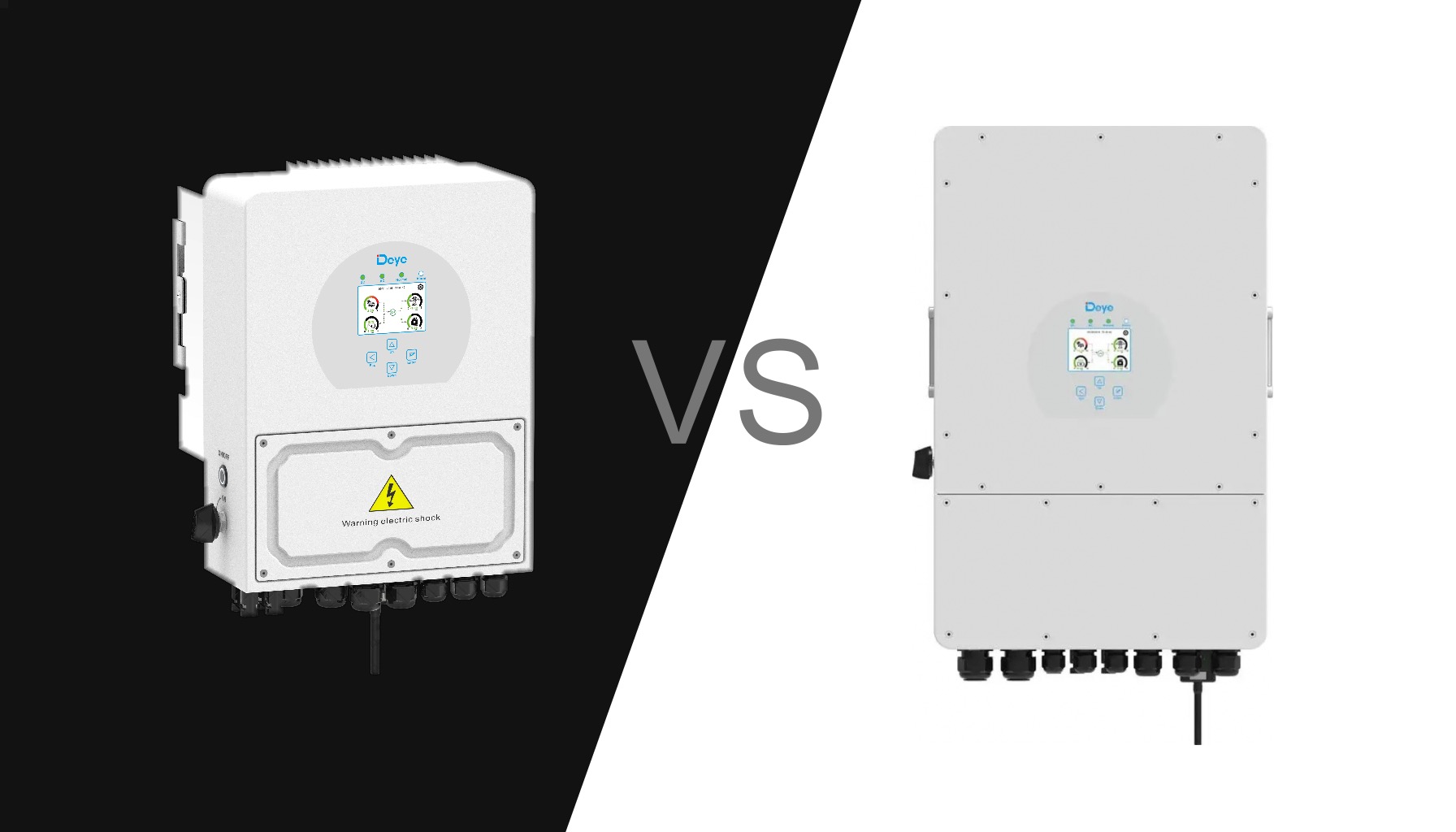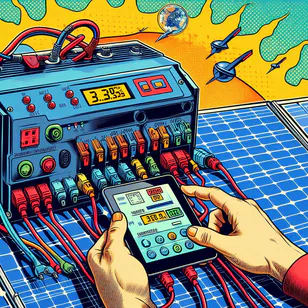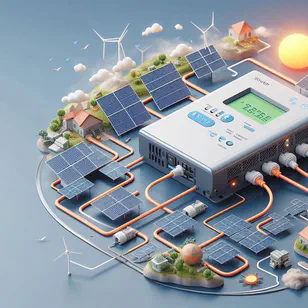Introduction
When planning a solar power system for your home or business, you may face a common dilemma: should you choose one three-phase inverter or three single-phase inverters? Both options have their pros and cons, and the decision will affect your system’s efficiency, cost, and overall performance. In this article, we’ll compare the Deye SUN-12K-SG04LP3-EU 12kW three-phase inverter with three Deye SUN-6k-SG05LP1-EU 6kW single-phase inverters to help you make the best choice.
Price Comparison
The first consideration is cost. Three Deye SUN-6k inverters will cost approximately 33% more than a single Deye SUN-12K. However, this also means you’ll gain 33% more total power output. If budget is a primary concern, a single three-phase inverter may be more economical, but the tradeoff in power capacity is worth noting.
MPPT and Panel Placement
In terms of solar panel flexibility, the Deye SUN-12K offers two MPPT (Maximum Power Point Tracking) inputs. This allows you to connect panels on two different surfaces or at varying tilt angles. Meanwhile, using three Deye SUN-6k inverters provides six MPPTs, enabling you to connect panels across six different surfaces. While this may sound advantageous, in practice, most homes rarely require such flexibility.
For a deeper understanding of connecting inverters to different surfaces, check out our article on how to connect a single-phase inverter to a three-phase power system .
Space and Noise Considerations
Another key factor is the amount of wall space required. Three Deye SUN-6k inverters will occupy significantly more space than a single Deye SUN-12K. In fact, the space required for three inverters is even greater than some newer 18kW models. Additionally, the Deye SUN-12K produces noticeable fan noise during operation, while the three Deye SUN-6k units operate silently—making them ideal for installations where noise is a concern.
Creating a Three-Phase Network
A major advantage of using three single-phase inverters is their ability to create a complete three-phase network. This is achieved by aligning the inverters to produce a phase shift of 120 degrees, mimicking the functionality of a dedicated three-phase inverter. You can also distribute loads across phases without creating a full three-phase system, allowing the use of a single-phase generator if needed. With a true three-phase inverter, however, a three-phase generator is required.
For more insights into setting up a three-phase system, see our three-phase solar inverter setup guide .
Reliability and Redundancy
Using three single-phase inverters can offer greater reliability. If one unit fails, the other two can still provide power, allowing your system to continue operating until repairs are made. With a single three-phase inverter, a failure would cause a complete shutdown of your system, making redundancy a key factor for those prioritizing reliability.
For more on specific inverter models and how they handle load distribution, check out our detailed article on the Deye SUN-10K-SG04LP3-EU 10kW hybrid inverter .
Conclusion
Choosing between a three-phase inverter and three single-phase inverters comes down to your specific needs. If you require more power and flexibility, the three single-phase configuration might be ideal. However, for those with limited space and budget, a single three-phase inverter could be the better option. Be sure to evaluate your energy needs and installation space carefully before making a decision.
Each home and business has its own unique requirements, so consider your priorities—whether it’s price, flexibility, noise levels, or reliability—when planning your solar energy system.




